-
Posts
682 -
Joined
-
Last visited
Content Type
Forums
Profiles
Store
Gallery
Articles
Blogs
Events
Downloads
Posts posted by Dr. Carlos Wesley
-
-
Thanks, Blake and David.
This young man benefitted from a trichophytic closure. While not for all patients, it was certainly something I felt was appropriate in his case due to his preferred hair length, donor density, and scalp elasticity.
-
While a month is certainly a safe bet for anyone who is advancing a hairline and a lot of work is being performed in non-hair-bearing areas (e.g. bald crown, bare recessions, etc.), there are plenty of healthy-sized procedures that can also go unnoticed after 10 days. In addition to the examples that I presented above, a considerable number of female patients in whom increasing frontotemporal (recessions) density is a goal can have all of their grafts well camouflaged by day 10 when they return back to "the real world" (I just saw another example of that today before composing this). 2000+ graft sessions to the patient's mid scalp or filling in their frontal scalp without advancing the hairline recently allowed a few patients of mine who were attending a wedding 10 days after their procedure to make the occasion without any noticeable evidence of a recent procedure.
While I agree with 'Cant decide' in that not every patient should expect to be back to looking exactly the same prior to one month postoperatively, there are plenty of examples of patients who certainly can comfortably get back to their routine much earlier. I've included below an old video of FUT and FUE patients as seen one week to one month after their sessions with me.
-
Thanks for your comments on this patient's progress.
Now, regarding Pilofocus, there was a recent expose in TheVerge that shed some light on our endeavor.
At long last, Pilofocus is just jumping on Twitter as this (rather than trying to respond to the various patient requests in different threads) may be the best media for updates in 2014.
-
To those requesting an update on Pilofocus, here is an article recently published in "The Verge". While both informative and somewhat provocative, the story contains a few points that require clarification:
1) The patient quoted with a large, red donor scar is not actually a surgical patient of mine, but rather a patient with whom I had a consultation as he sought treatment for his cosmetically-unacceptable surgical scar that he received after having undergone surgery with a different surgeon at a different location.
2) Amongst the many interviews I granted to the journalist, one took place immediately following a very in-depth consultation during which I counseled a severely-depressed teenager. Although his hair loss was his stated source of depression, I also worked to find him a psychiatrist that has helped him through his clinical depression. This is a rare instance and certainly does not reflect the majority of the healthy and confident patients with whom I meet. I was, therefore, disappointed in the otherwise well-written article when I felt that this unique psychiatric referral was presented as my preferred treatment for many. It falsely portrays our medical issue of hair loss as frivolous when, in reality, I feel so strongly about its importance that I have dedicated my professional career to treating it.

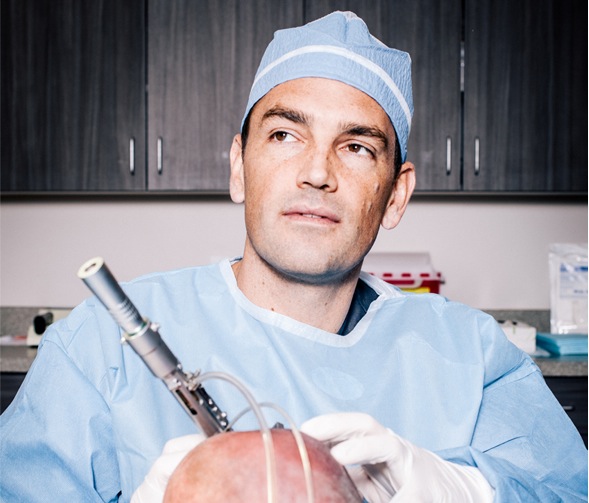
-
That is great to hear, scooter. In general, patients should be able to return to work or social activities in 7 - 10 days without evidence of the procedure being noticeable. Another trick that a few patients use is to temporarily grow out facial hair. That way, when they return to work, people are initially a bit distracted by their temporary new look (beard or mustache).
By the time patients then shave it cleanly a few days later, their friends/colleagues have grown accustomed to their overall appearance!
-
Rootz is correct. A study illustrated that newly ingrown transplanted hairs can grow in for the first time even 18 months after the procedure. We have also observed that the use of platelet-rich plasma (PRP) and ACell as a graft storage solution appears to result in slightly earlier growth of transplanted hair."
-
Thanks, David. Here is a close-up view of the patient's donor scar at 15 months postoperatively. Generally, any residual redness along the donor scar has resolved within 3-4 months after the procedure.

-
Here are various examples of our patients whose pre-existing hair helped camouflage the redness and the stubble for the short-term postoperative period after surgical sessions with me. I have included four (4) patients with various hair lengths including a female patient. The first patient has a video with an intraoperative segment to demonstrate the surgical pattern. I have attached their intraoperative pattern pictures as well.
PATIENT #1:

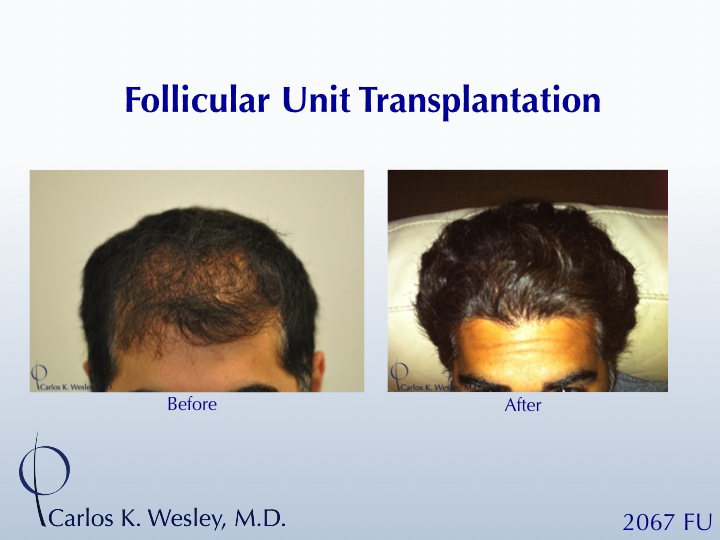
His intraoperative appearance can be seen in the video below:
PATIENT #2:
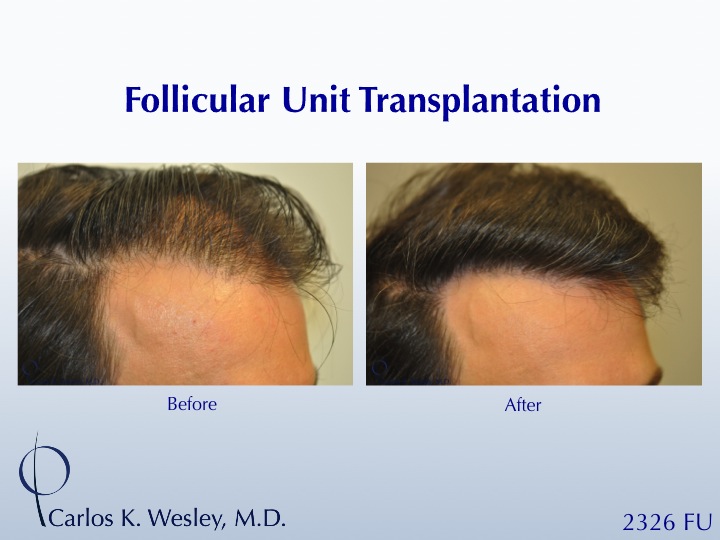
PATIENT #3:
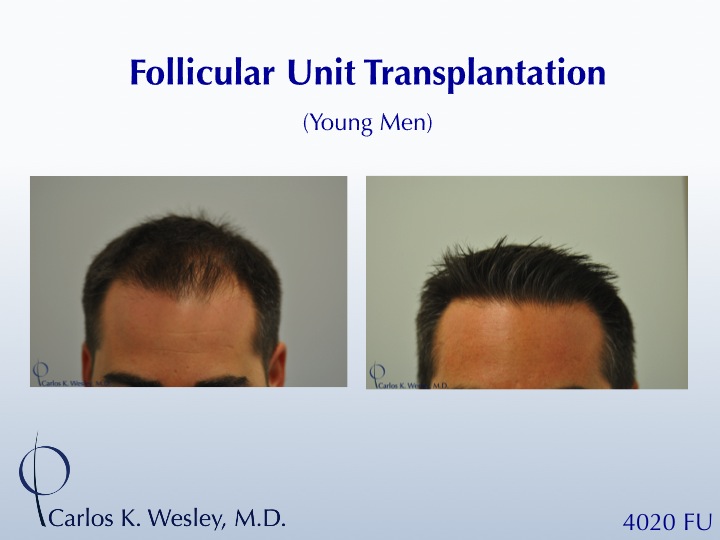
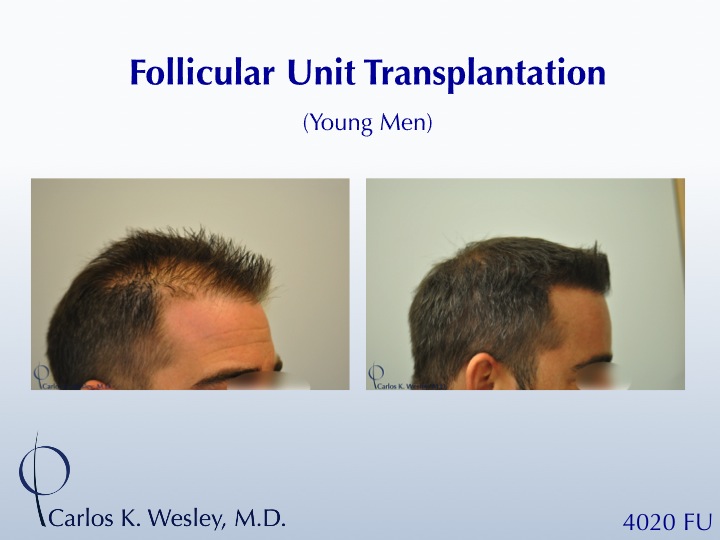
PATIENT #4:
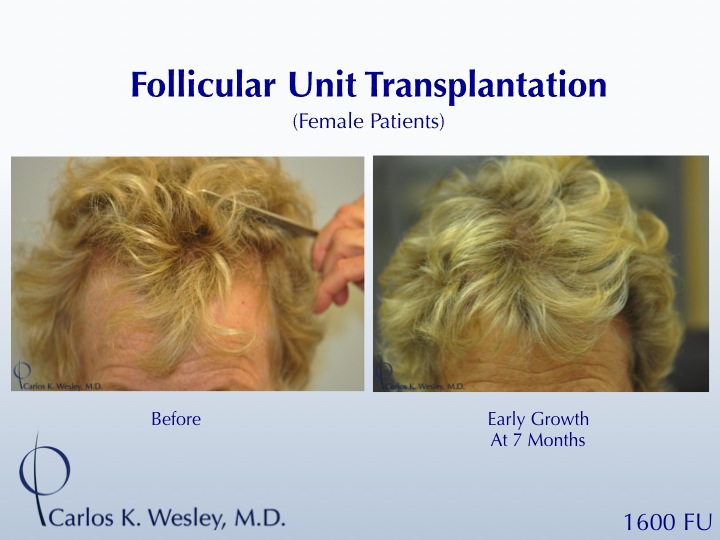
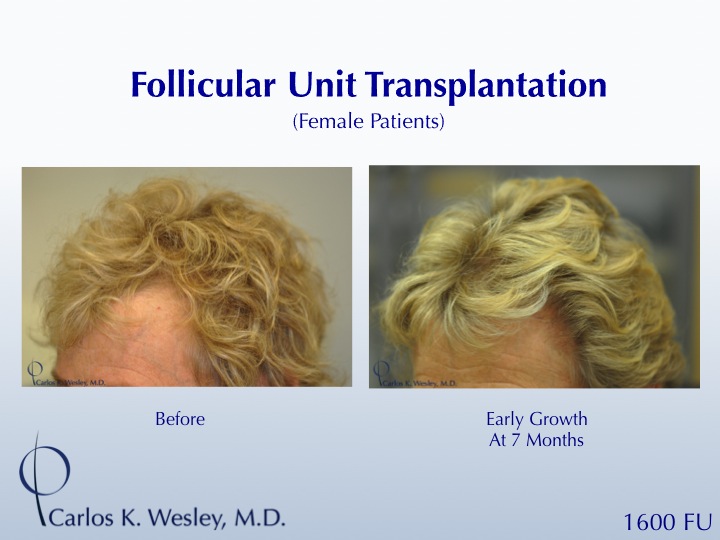
-
Realizing that this section is rather sacred territory for patients and viewers who are considering the HT procedure (i.e. No Docs!), I still wanted to update the community on fakeplstctrees simply because a number of my patients have inquired about his progress.
Firstly, he is very well and since his procedure with me has become a friend and someone who has subsequently referred others to my office for surgical treatment of their hair loss. For reasons of his choosing, he is no longer very active in the Internet community (as far as I am aware).
So, to allay any concerns or questions people may have about his progress, I am posting images of his progress at the 19th month postoperatively. Comparisons are made between before the procedure, on the day the surgical pattern was designed, and 9 days after the procedure.





-
Great topic.
One simple and effective method for relief of this short-term discomfort is applying a hot towel soaked in epsom salt water to the back of your head. This can be repeated 3-4 times for a few minutes each time. This can help soothe any discomfort, which will resolve in time.
Our office conducted a study on post-op donor discomfort a few years back. While it was primarily focused on FUT, it would be interesting to also identify factors that lead to this rare occurrence after FUE as well.

-
Thank you for your comments. It is also worth mentioning that during his hair transplant procedure this patient had injections of platelet-rich plasma (PRP) and ACell into both his mid scalp and the frontal third of his scalp.
While magnified images and hair mass measurements of the areas of his scalp not surgically treated revealed that there was very little change in hair mass from injections, the patient reported that his surgically-treated area began its post-op recovery and growth within a few weeks of the procedure (significantly earlier than the standard recovery time).
-
Attached, please find images of the patient's donor scar from his follicular unit transplantation (FUT) session in our office. He is approximately 13 months post-op.

-
Thanks, Blake. In addition to the chilled PRP as a storage solution, an ACell mixture is blended into our graft storage solution. This may also be contributing to this encouraging trend of earlier hair growth.
-
Thanks for you comments. Yes. He's a very happy "middle aged" man.
-
Thanks for you comment, abcd0000. Much appreciated.
-
Thank you very much. And, I enjoy seeing the very nice results posted by your clinic as well.
-
Thanks for your comments. Spanker, I've attached images along this patient's timeline. The first one is how he looked at the beginning when a more conservative pattern was created. The other images illustrate his follow-up session down the road. He was approached like this because - for such a young patient - I wanted to make sure that he had enough hair transplanted to always have a natural appearance in his 30s, 40, 50s, etc. Once this grew in and he was excited about advancing the pattern, then I could feel more comfortable advancing his hairline a bit during his second FUE session (seen in the last 4 images, taken about a week after his 2nd FUE session) as well as transplanting back to his vertex transition point (where the scalp starts to slope downwards). This way, even when he looses his pre-existing hair in his current very low hairline, he'll have a nice looking hairline and his entire mid scalp will be nicely covered for essentially the remainder of his life.
If he were a bit older and had a more certain donor prognosis, we could have easily done the 3000+ FUE grafts at the same time. However, we both preferred the step-wise approach because it 1) gave the patient confidence that it was going to look great and 2) for financial reasons, it made the procedure more affordable (rather than a single payment).
It's also true what you say, scar5, about hair shafts having more coverage when seen from the side. However, mixing punch sizes doesn't cost more in our FUE cases. It's something I always do for patients in order to vary the types of grafts harvested and for their subsequent transplant.
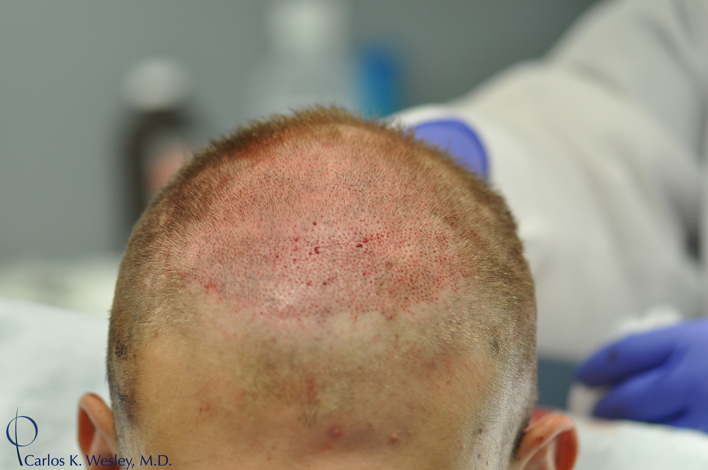
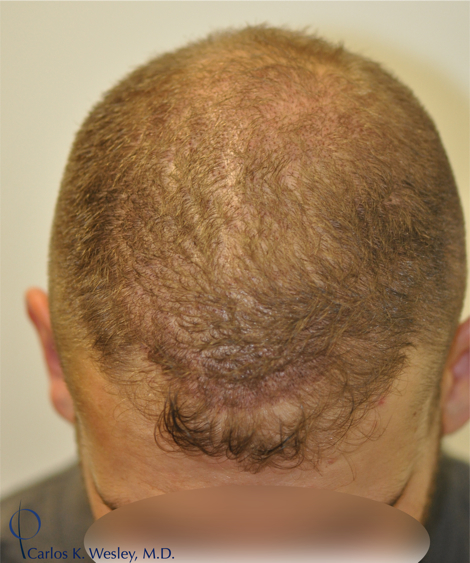
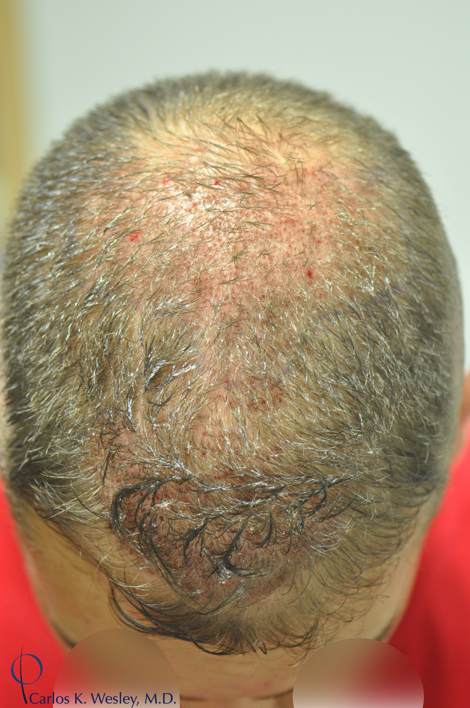
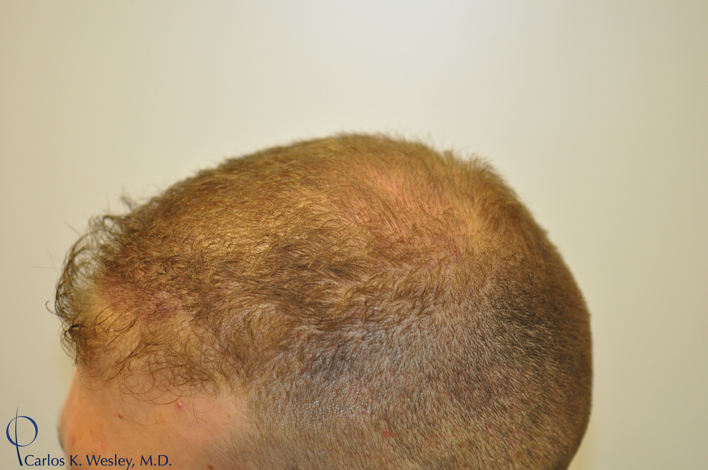
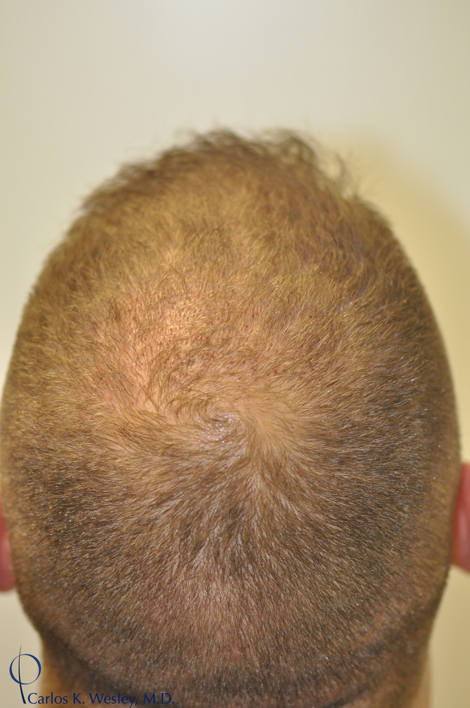
-
Here is an example of the donor area from an African-American patient of mine after a relatively-small follicular unit extraction (FUE) session. He only had about 700 grafts transplanted, but certainly could feel comfortable with a short hairstyle after a session in our NYC practice.
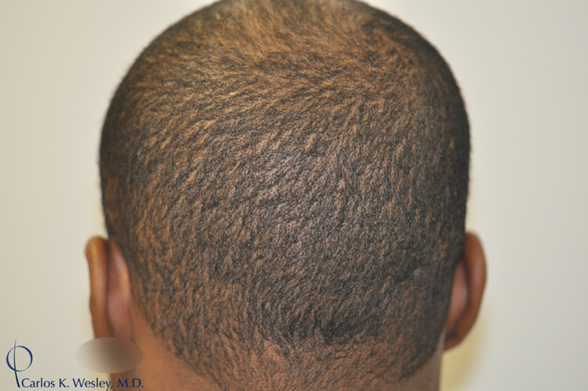
-
Thanks, OtherSyde.
This WAS follicular unit transplantation (FUT) or strip harvest. I've attached a magnified image of this patient's donor scar as seen at 11 months. Now, if an African-American patient has a history of keloid scarring I would certainly first do a small test session to ensure that his/her donor closure would be successful. If not, patients should be able to wear their hair at a relatively short length like this because the additional curl of the surrounding hair provides even better coverage of any fine donor scar than straight hair.
-
Thanks, Rootz. It seems a little counterintuitive, but scars after having subsequent surgeries can often be even finer than they are after the first session. It's generally the mastoid region (about two inches behind and just above the ears) that are most challenging to maintain a fine donor scar. This is also generally the region with greatest tension and least scalp laxity. For this reason, patients are often encouraged to focus their preoperative scalp massages specifically in the mastoid region.
-
Thanks, Blake and Janna (Shapiro Medical Group). It's really refreshing when other clinics support one another. It's the best way for our field to continue its forward advancement. Much appreciated.
-
Thanks for your comments. I have attached a few of his pattern pictures. As you can see, patients in our practice do not need to shave their heads for an FUT procedure. In fact, the pre-existing hair is quite beneficial in that it camouflages any redness during the short-term recovery process. Therefore, patients are able to return to work or social activities earlier.
In addition to the pattern pictures, I included a close-up image of the donor at the time of suture removal. This patient did a great job of keeping his donor area clean which facilitates the suture removal process and allows you to see the alignment of the donor wound edges.

-
@Gary1911A1: The most updated information regarding the Pilofocus technique can be viewed here. Rather than explaining it in detail during each and every in-person consultation, I thought I would simply post the 25-minute in depth presentation that describes the background and rationale behind the concept as well as the development of the surgical device and clinical results thus far.
The password required to view the video is "piloscopy".
-
This 42-year-old male was bothered by his expanding bald crown. He elected to fill his mid scalp region. A 2475 FU session of FUT with Dr. Carlos K. Wesley covered the mid scalp.
Magnified FotoFinder images show the mid scalp region before and approximately one year after his procedure. Global images (below) also display this patient's transformation.

















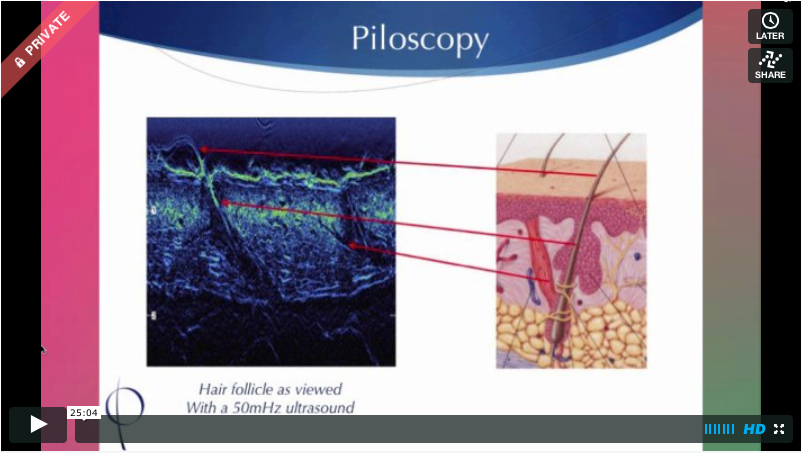







Dr. Carlos K. Wesley (NYC) - Young Male with Frontal HT and PRP (2036 FU)
in Results Posted by Leading Hair Restoration Clinics
Posted
Appreciate your comments, garethbale.
Yes. This patient had been on finasteride 1mg for the past seven (7) years prior to undergoing follicular unit transplantation (FUT). His crown was doing quite well and still has only a few miniaturized hairs as detected during his initial consultation with me using a magnified camera. This detailed imaging is something we perform for all patients coming in for hair loss treatment as it helps to reveal what's really taking place at the scalp level.